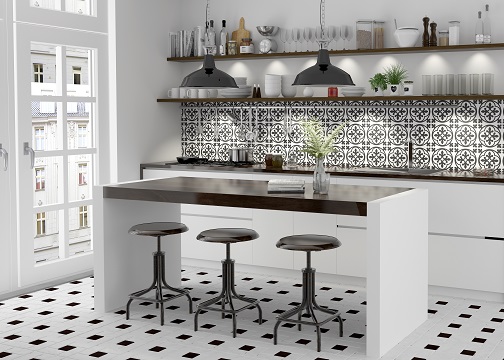Waterproofing a floor is essential to protect it from moisture, spills, and potential water damage. Whether you are dealing with a basement floor, bathroom, kitchen, or any other area prone to water exposure, effective waterproofing helps maintain the integrity of the floor and prevents issues like mold and mildew growth. Here’s a comprehensive guide on how to waterproof a floor:
Identify the Type of Flooring:
The approach to floor waterproofing depends on the type of flooring material. Different materials have varying levels of resistance to water. Common flooring types include tiles, hardwood, laminate, vinyl, and concrete. Understanding the characteristics of your flooring is crucial for selecting the right waterproofing method.
Seal the Grout Lines:
For tile floors, the grout lines are vulnerable to water infiltration. Use a high-quality grout sealer to seal the grout lines. Grout sealer helps prevent water from seeping between the tiles and causing damage to the subfloor. Regularly reapply the sealer, especially in high-moisture areas like bathrooms and kitchens.
Apply Waterproofing Membrane:
A waterproofing membrane is a thin layer of material applied to the surface of the floor to create a barrier against water. It is particularly effective for concrete floors in basements. There are different types of waterproofing membranes, including liquid membranes and sheet membranes. Liquid membranes are applied with a brush or roller, while sheet membranes are rolled or laid onto the floor.
Use Waterproof Floor Sealers:
Waterproof floor sealers are available for various flooring types, including concrete and stone. These sealers penetrate the surface of the floor, creating a protective barrier against water and other liquids. This is especially important for basement floors where water intrusion is common.
Install a Waterproof Underlayment:
When dealing with materials like laminate or engineered wood flooring, a waterproof underlayment can provide an additional layer of protection. The underlayment is placed between the subfloor and the flooring material, acting as a moisture barrier. It helps prevent water from reaching the flooring and causing damage.
Consider Epoxy Coatings for Concrete Floors:
Epoxy coatings are a durable and waterproof solution for concrete floors. They create a seamless and impermeable surface that resists water, chemicals, and stains. Epoxy coatings are commonly used in garages, basements, and industrial settings. The application process involves preparing the concrete surface, applying the epoxy coating, and allowing it to cure.
Ensure Proper Sloping and Drainage:
In areas like bathrooms and kitchens, proper floor sloping and drainage are essential for preventing water accumulation. Ensure that the floor is appropriately sloped towards drains to facilitate water runoff. Use waterproofing techniques, such as applying a waterproofing membrane or sealant, to protect the floor from standing water.
Install Waterproof Flooring:
Consider choosing flooring materials that are inherently waterproof, such as ceramic or porcelain tiles, luxury vinyl, or certain types of engineered wood. These materials are designed to resist water damage and are suitable for areas prone to spills and moisture.
Repair Cracks and Gaps:
Inspect the floor for any cracks or gaps that may allow water to seep through. Fill these openings with an appropriate waterproof filler or sealant. Cracks in concrete floors, for example, can be repaired using epoxy or polyurethane-based sealants.
Regular Maintenance:
Maintaining the waterproofing integrity of the floor requires ongoing attention. Clean spills promptly, avoid standing water, and regularly inspect the floor for any signs of wear or damage. Reapply sealers or coatings as needed, following the manufacturer’s guidelines.
Consult with Professionals:
If you are unsure about the best waterproofing method for your specific floor type or if you are dealing with a complex situation like a flooded basement, it is advisable to consult with waterproofing professionals. They can assess the specific needs of your space and recommend appropriate solutions.
Conclusion:
Waterproofing a floor is a crucial step in preserving its longevity and preventing water-related issues. The chosen method depends on factors such as the type of flooring, the level of water exposure, and the specific requirements of the space. Whether through sealers, membranes, coatings, or other methods, proper waterproofing ensures a durable and resilient floor that can withstand moisture challenges over time. Regular maintenance and vigilance contribute to the long-term effectiveness of the waterproofing measures, keeping the floor in optimal condition.








